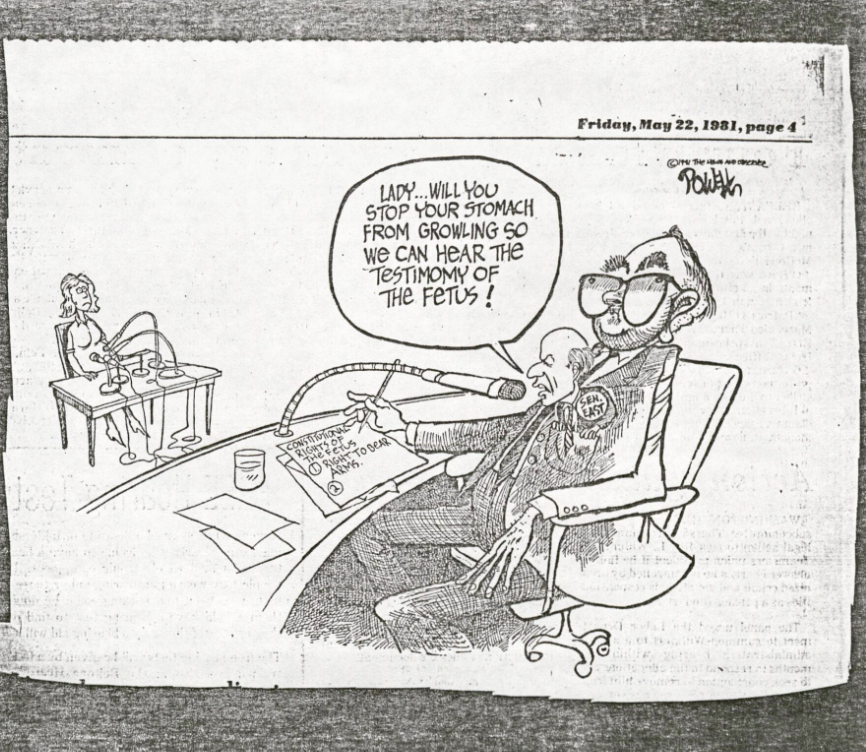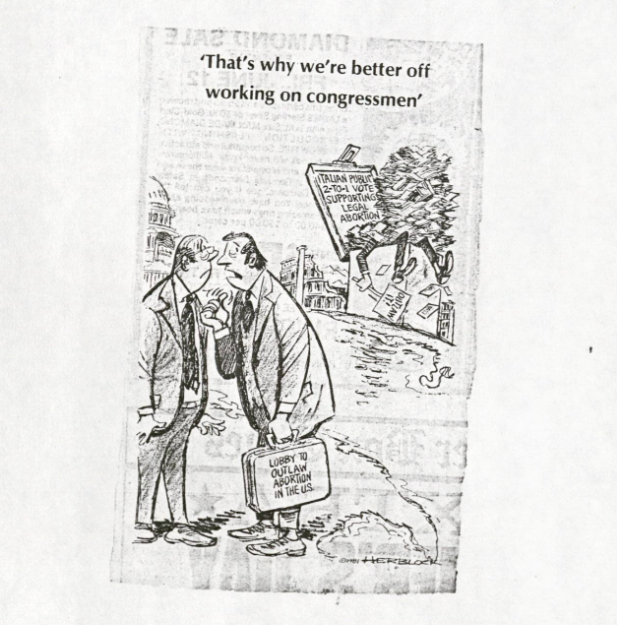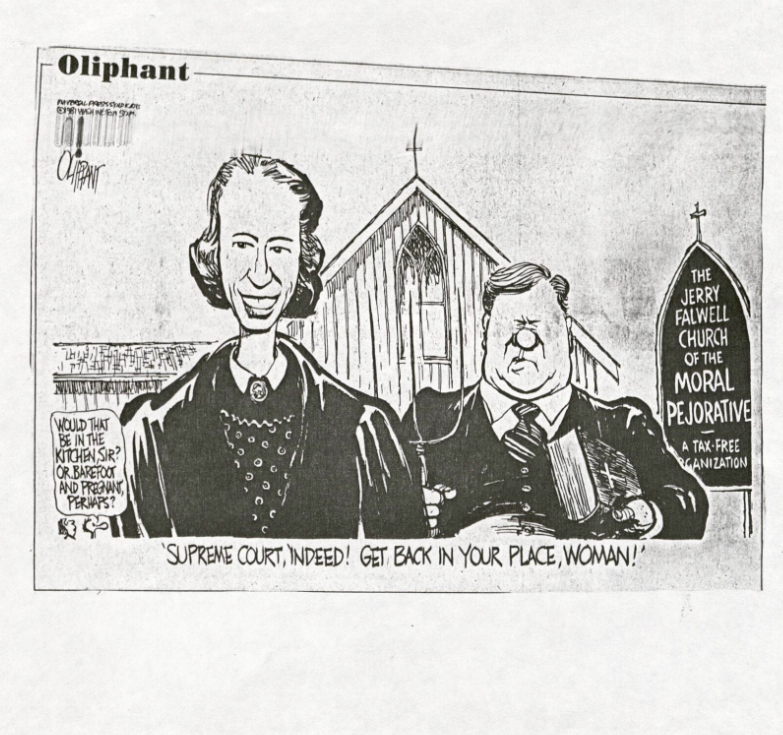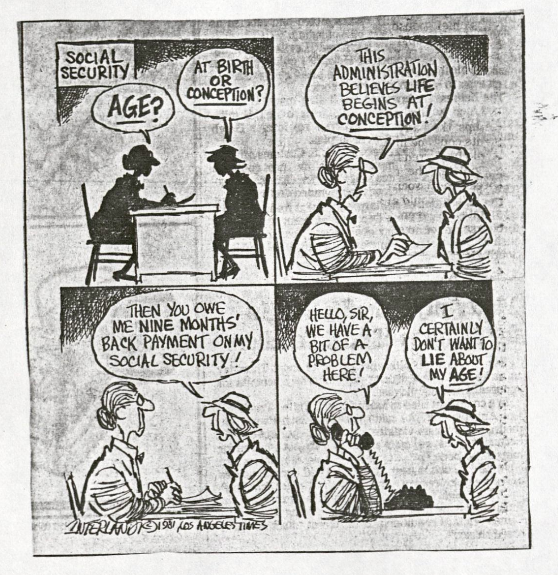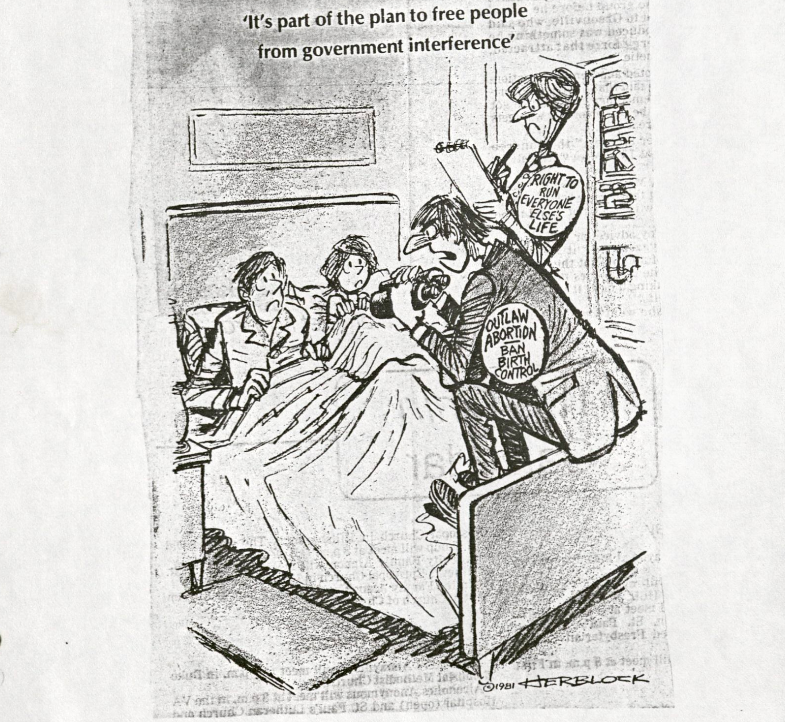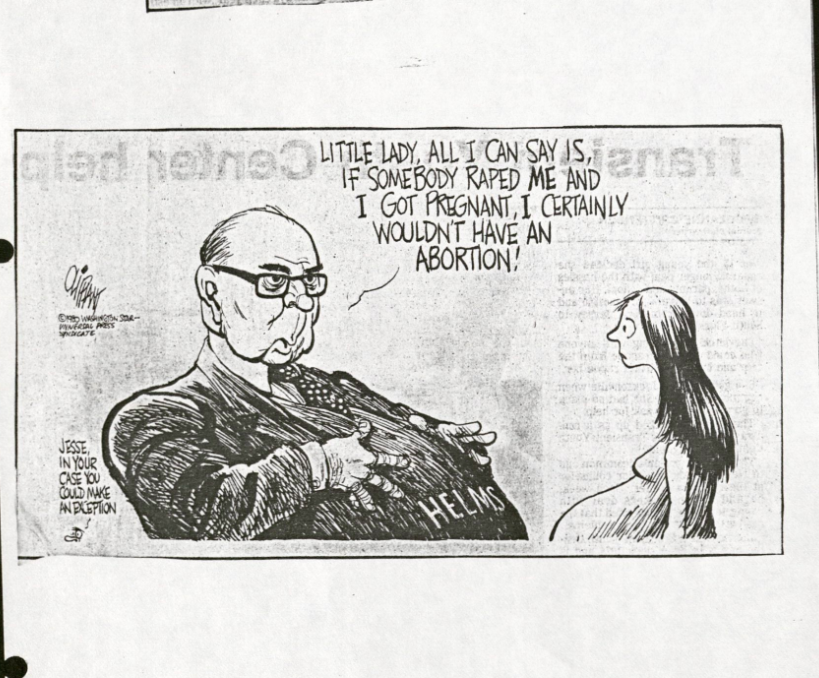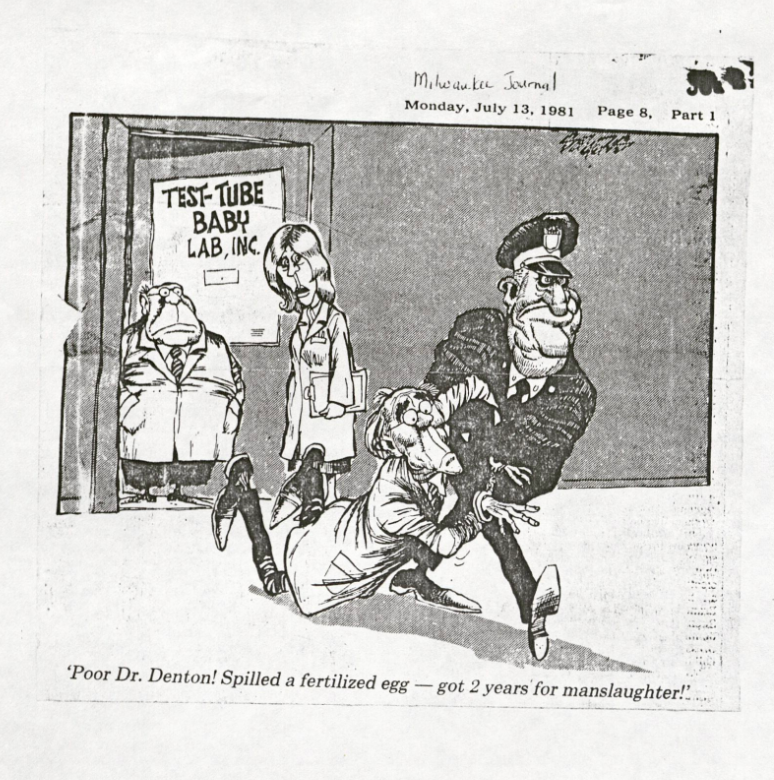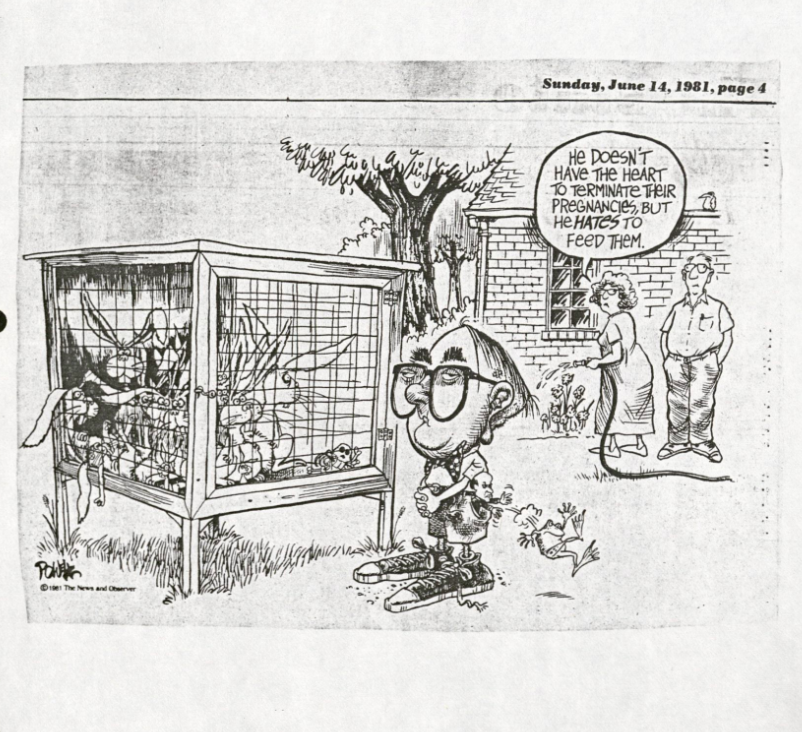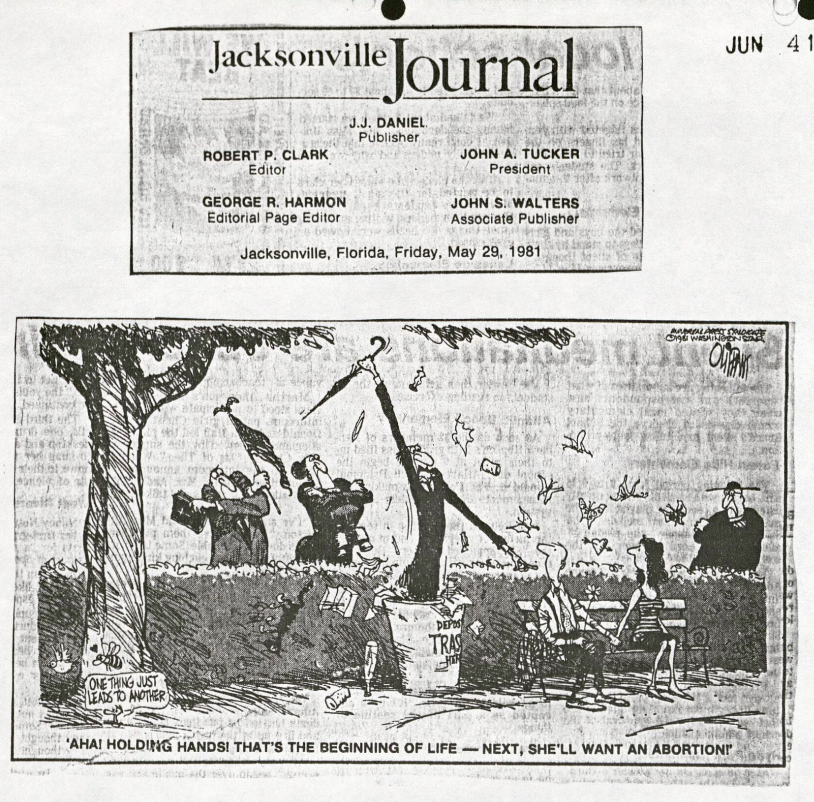The Opposition
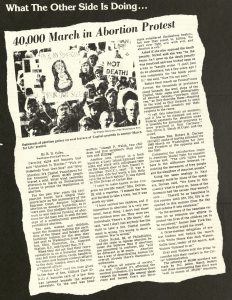
Atlanta Lesbian Feminist Alliance, Box 13.
“It isn’t ‘her’ body.”
Just like any social movement, the reproductive rights movement has its opponents. Yet, when it comes to reproductive freedoms, and the right to abortion specifically, it is one of the “most vicious and insidious examples of single-issue politics” (Abortion: An Issue That Won’t Go Away, 1980). Each side has extremely strong feelings on the subject, and more than a legal issue, it is one of morality.
In the post-war era, the pro-life movement began taking large strides to restrict reproductive freedoms. They used marches, legal battles, and, in some cases, violence to prevent the legalization and obtainment of abortion and the spread of increased access to birth control.
Lack of Control
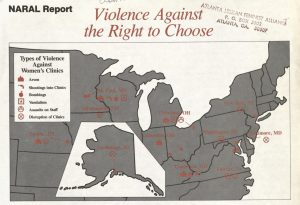
Atlanta Lesbian Feminist Alliance, Box 13.
Many instances of violence, such as the ones shown in the map above, stemmed from the fear of giving women control of their own bodies.
Feminist Anne Corwin, in attempt to try to understand the all-male speakers at a Pro-Life Rally and the Pro-Life movement as a whole, arrived at a theory that the majority of the opposition to reproductive rights are men who do not want to accept their lack of power in reproduction. “Perhaps they cannot accept the fact that this does make the fetus intrinsically hers in a way they can never, never share. […] Once conceived, the man’s participation in the process is over” (No Women Speak at Pro-Life Rally, 1979). This leads to anger and a want to control, which, in turn, leads to fighting against the reproductive rights movement.
When it came to birth control, fear surrounded whether or not women would “bear enough children if birth control knowledge were widespread,” whether “taking away a woman’s fear of pregnancy would make her promiscuous,” whether the institution of marriage would collapse, or whether the use of contraceptives would “reduce matrimony to a legalized bed of prostitution” – as phrased by Catholic priest, Charles E. Coughlin (U.S. Women’s Struggle for Planned Parenthood, 1968).
Right to Life
With abortion, it was an entirely different story. Much of the argument surrounding the pro-life movement was in defense of the fetus’s right to life over the women’s choice. This view of the opposition was much more than a loss of control over women’s decisions, it was also a fierce defense on behalf of what they considered to be a life.
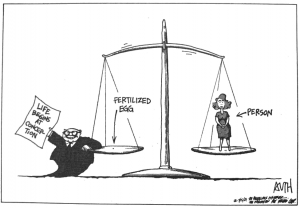
Reproductive Rights National Network Records, Box 1.
Despite this pillar of the movement, many pro-life supporters still supported allowing abortions in certain cases, such as when the pregnancy or act of birth would pose a serious threat to the woman’s health or in cases of rape or incest. In Doe v. Bolton, Margie Pitts Hames, an Atlanta civil rights lawyer, argued that this inconsistency negated the entire pro-life argument. Hames represented “Mary Doe” and defended the right to all women seeking legal abortion in Georgia under the argument that the 14th and 9th Amendment’s rights to privacy should permit abortions for women and allow physicians their right to provide abortions in their practice without limitations.
In 1984, USA Today asked the president of the National Right to Life Committee whether anti-abortion laws deny a woman a right to choose what happens to her body. He responded by saying “It isn’t ‘her’ body. How can a woman say that the little boy she carries is part of her body? That’s a biological absurdity. That is not her body” (USA Today INQUIRY Topic: Abortion, 1984). This argument convinced people who agreed with Willke that they were justified in stripping the reproductive rights of women.
Images: Takey Crist Papers, Box 19.
Human Life Amendment
After Roe v. Wade was passed in 1973, which granted women the right to abortion under the Constitutional right to privacy, there were many attempts to pass a Human Life Amendment, which would give fertilized eggs recognition and rights as if they were human beings. In 1981, feminist Rhonda Copelon said “This ‘fetal supremacy’ could be the most effective weapon that male supremacy has ever designed to control women’s reproduction and women’s lives.” […] Thus, to declare the fertilized egg equal to a person under the Constitution would effectively subordinate the rights, needs, and interests of women to that of the fetus, giving the state enormous power over our lives.”
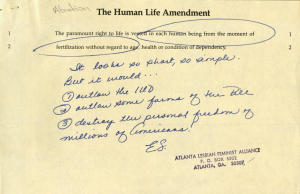
Notes taken by “E.S.” outlining what the Human Life Amendment would mean for women. Atlanta Lesbian Feminist Alliance, Box 13
Mandatory Motherhood
Regardless of whether or not the motivation of the Pro-Life movement was to limit women’s freedoms or preserve fetal life, the end-goal would make motherhood mandatory for women. Author Garrett Hardin outlines this concept in his 1974 book Mandatory Motherhood: The True Meaning of “Right to Life”:
“1. There is no due process of law whereby one human being, or the state can deprive another and innocent human being of life. (Capital punishment is only for the guilty.)
2. A Right-to-Life Amendment asserts that all embryonic stages, from the fertilized egg onward, are human beings period.
3. An embryo is certainly “innocent” of all wrong-doing.
4. Therefore, an embryo cannot be deliberately aborted and killed.
5. Therefore, a woman who found herself unwillingly pregnant would be compelled by law to become a mother.
That is mandatory motherhood.
A Right-to-Life Amendment is a Mandatory Motherhood Amendment.”
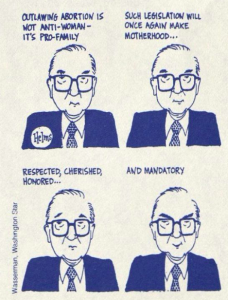
Reproductive Rights National Network Records, Box 1
Too Expensive to Afford
“When we speak of the freedom to choose and control our own bodies, we must remember that just making abortions legal and accessible does not necessarily secure the freedom of choice for a multitude of women who are ground down by poverty and racism.”
– YAWF Women
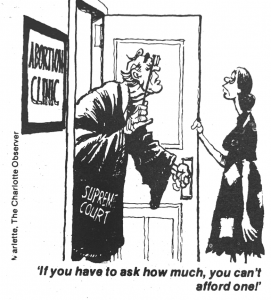
Takey Crist Papers, Box 19.
When the Human Life Amendment and similar proposals encountered difficulties passing, the next step for the pro-life movement was to ensure that as long as abortions were legal, they must be inaccessible.
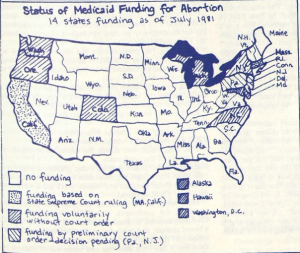
Reproductive Rights National Network Records, Box 1
This began with the Hyde Amendment in 1976, which barred the use of Medicaid and other federal funding for abortions. Many states followed suit in passing similar laws restricting accessible abortion.
The legalization of abortion was meaningless if the cost was beyond the reach of most women.
In the late 70s and early 80s, the average cost was between $150 and $500, meaning that as long as economic deprivation existed and abortions were uncovered, only the most affluent women would be free to choose whether or not to have children. While others, again, would be forced into this mandatory motherhood.
In response, feminists and pro-choice supporters demanded the right to free abortion. As long as it was not free, it would not be the right of every woman. (Abortion and Class Society).
The cartoon below, captioned “… no state funds necessary” highlights how making abortion unattainable through high prices did not prevent abortion from happening, it simply meant that women would try to obtain abortions in other ways, such as using dangerous at-home methods.
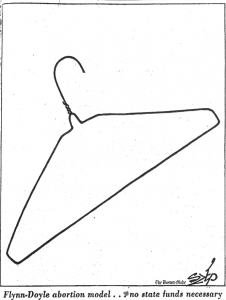
Jean Kilbourne Papers, Box 45.
———
As if the images of motherhood and the pressures to be a mother that were coming from advertisements and prescriptive literature were not enough to urge women into becoming mothers, legal regressions like the Hyde Amendment, Comstock Laws, or abortion restrictions (see timeline 1 & 2 for more information on these laws) made motherhood an obligation.
However, while white women tried to resist being forced to involuntarily bear children, the situation was much more complicated for women of color. In the midst of the Pro-Life movement beating on and riots against birth control and abortion, women of color were unwillingly sterilized and provided an excess of birth control to ensure that they would not become mothers. Balancing this abuse with the Reproductive Rights movement put women of color in an extremely difficult situation.
